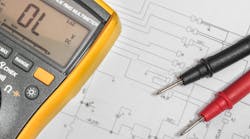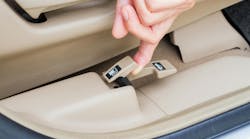Welcome to this month’s Tool Q&A. Once again, this column features questions and answers on a specific group of tools and equipment, dedicated to certain applications and technologies. The questions addressed here come from you, the loyal PTEN reader. So, if you’re curious about a given tool or equipment application, please submit your question to PTEN so it can be considered in an upcoming Tool Q &A feature.
With that, we’re going to discuss tools and equipment specific to a new technology known as telematics, and the specialty area of vehicle performance/racing.
Q. What exactly are telematics and how will they impact my life in the service bay?
A. Telematics are defined as the integration of telecommunications and informatics, which is essentially the union of telecommunications and information technology. As a simplified example, it’s a technology much like that embodied in today’s smartphones—the ability to communicate, gather information and to tie it all together with location-dependent relevancy. It’s a technology that provides a rich feature set for today’s motorists and is progressing rapidly.
GM’s OnStar is perhaps the best example of telematics implementation to date. This technology typically provides four key features: 1) Safety and Security, 2) Information and Navigation, 3) Entertainment, and 4) Diagnostics. As these features become standard on newer vehicles, they will have added integration with diagnostics to aid with troubleshooting. Speaking of smartphones, there are already some mobile apps that enable diagnostics with a vehicle’s telematics systems. For instance, OnStar has a mobile app that enables diagnostic access that can control charging time on electric vehicles such as the new Chevrolet Volt.
Q. Will the growing popularity of telematics take away some of the diagnostic access we now have and put it in the hands of motorists and do-it-yourselfers?
A. The convergence of technologies into telematics will provide diagnostic gateways and capabilities you never had before. At the same time, automakers and industry groups will be doing everything in their power to bring new and exciting features to motorists. For instance, Delphi, a leading global supplier of electronics and technologies for automotive, commercial vehicle and other market segments, recently announced a program to help AAA members. This program will include:
- Enhanced roadside service to locate members quickly and accurately when they need help on the side of the road. This also includes remote diagnostics to collect information on a potential vehicle problem; reduce a service call's time-to-resolution to get members back on the road more quickly.
- Notification of preventive maintenance to keep members informed of vital vehicle information including diagnostic codes.
- A vehicle locator function to assist AAA members in locating their vehicles.
- Remote door unlock capability to help members locked out of their vehicles.
Q. What will diagnostic equipment for telematics systems look like and what are the costs?
A. There will be both a hardware/software component and a service information component to telematics diagnostics. Overall, the exact profile of this equipment is still being defined, like telematics technology itself. Some aspects of telematics may be accessed through a tool you’re already familiar with, the scan tool. The key thing is the ability to access the vehicle’s data bus, where communications takes place. The cost for equipment will depend on the hardware/software platform and relevant service information subscriptions for the vehicles you plan to service.
Q. Isn’t the push to telematics just another way for “Big Brother” to watch everything we do and send service business back to dealers?
A. While some may see telematics implementation that way, the convergence of different technologies simply lends itself to provide more features for today’s demanding customers. Telematics certainly accomplishes that and will continue to do so. Inherently, you might say dealers have an initial advantage when it comes to telematics service, since the technology is “bred” in by the manufacturer. The best way to ensure that your shop gets its share of the telematics service pie is to stay informed on this rapidly developing technology so you can make good decisions.
Q. We run a performance tire shop where we install a lot of expensive tires and wheels. What can we do to ensure that we install tires and wheels properly on the vehicle to reduce comebacks?
A. First, make sure you’ve got a wheel balancer up to the task for today’s sensitive suspension systems. You’ll want to make sure you have the capability to match balance tires with wheels and the ability to fine balance a wheel/tire if needed. A customer with a Porsche making a big investment in wheels and tires isn’t going to be very happy with a car that shakes going down the road.
When installing wheels, not only is it important to apply the right amount of torque, but also to apply it evenly around the wheel. The techniques for accomplishing this vary somewhat according to the configuration of the wheel studs. You should do this by applying torque gradually and evenly to the wheel studs, alternating the pattern of tightening. On five-stud wheels, the most common application, this means tightening the studs in a “star” pattern. For 4- and 6-bolt wheels, use a similar procedure. Start with about 25 percent of the manufacturer’s specified torque value, and work your way up gradually from there. Do not apply full torque to just one stud before moving on to the next. You should always look up the recommended torque spec first, especially when you are installing custom or alloy wheels.
A final tip: make sure you consistently access service information for tire and wheel related information. As the spectrum of tires and specialty wheels have increased, so have problems related to their installation.
Q. We run a performance shop and want to make sure that exhaust backpressure is OK before we release a car to a customer. What kind of equipment can we use to check this?
A. The best way to check backpressure is directly from the exhaust system. The oxygen-sensor-mounting hole offers a handy port to check backpressure. Since all sensors use 18mm threaded holes, one adapter fits all cars equipped with an oxygen sensor. With the engine off, carefully remove the sensor. Install the adapter in the hole and tighten it according to the manufacturer's torque spec. Connect your vacuum/pressure gauge to the adapter. Start the engine and let it warm up to normal operating temperature. Take one reading with the engine idling in neutral and another with the engine running at 2000 rpm. Faster engine speeds should show a higher backpressure reading. Don't use a powered exhaust venting system when backpressure testing. The system's draw could alter the readings. If necessary, do your testing outside. If you have a chassis dynamometer, run the car under road load conditions to heat up the exhaust system. Sometimes, backpressure slowly builds as the exhaust system heats up. If you don't have a chassis dynamometer, carefully route the hose so it doesn't drag or get pinched. Take the car for a ride and check backpressure under load. As a general guideline, backpressure at idle shouldn’t exceed 8.62 kPa (1.25 psi) and 20.68 kPa (3 psi) at 2000 rpm. Remember that readings may vary with each vehicle and its specific configuration. When you’re finished, remember to reset any oxygen-sensor-related codes.
Q. During an engine performance diagnosis, we found low compression in a cylinder. What kind of equipment can we use to get more details on the specifics of this compression problem?
A. As a next step, connect a cylinder leakage tester to determine where the source of the compression leak is. As a rule, most engines in good mechanical condition will show less than 20 percent leakage, though some engines can read as high as 25-30 percent and still perform okay. Generally, leakage more than 20 percent means trouble. Cylinder leakage testing really proves itself when you pinpoint the leak source:
-Air escaping out the tailpipe indicates a leaky exhaust valve.
-Air escaping into the intake manifold tells you there's a leaky intake valve.
-Air escaping into the radiator indicates a compression leak into the cooling system through a bad head gasket or a crack in the head or cylinder.
-Air escaping into the crankcase indicates blowby due to worn rings, a worn or damaged cylinder, or a cracked or burned piston.
Once you’ve honed in on the area of the suspected compression leak, you can then use a borescope to examine inside a problem cylinder to look for some of the conditions mentioned previously. You may also be able to use a smoke machine to further confirm leak sources, such as leaky valves. Please note that when examining the internals of a cylinder with a borescope, it may be difficult to confirm worn rings or other problems that may require engine disassembly.
As technology marches on, and the service industry continues to evolve with it, new tools and techniques are sure to keep pace. Please send along your tool and equipment questions so that we may address them in a future issue. Stick with PTEN and we’ll keep you in step right along the way.

